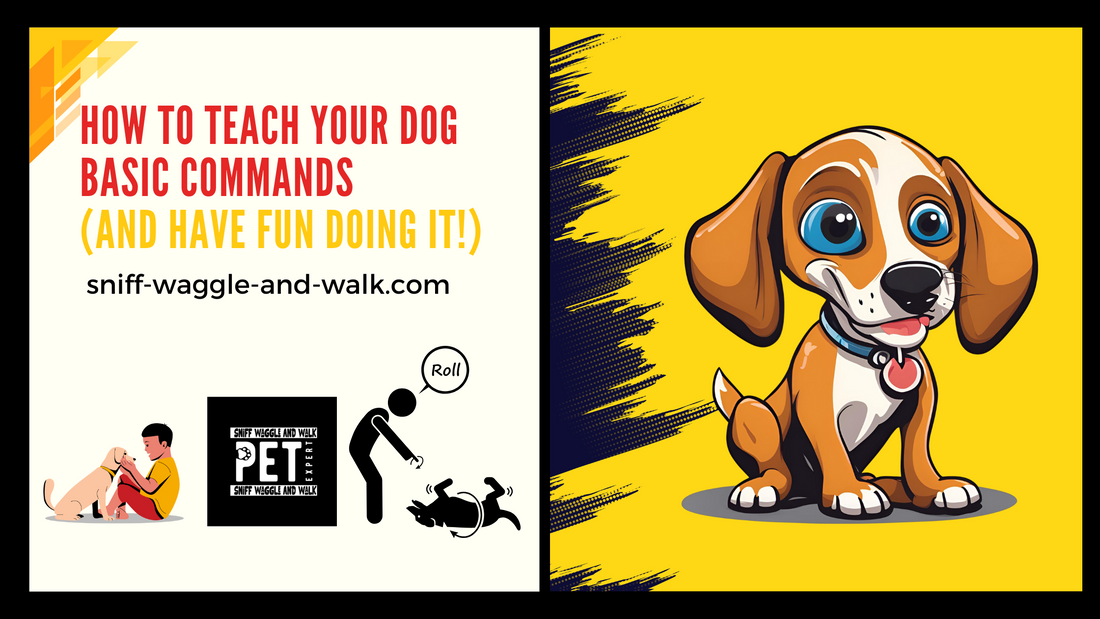
How to Teach Your Dog Basic Commands (and Have Fun Doing It!)
Share
Training your dog isn’t just about teaching them to follow commands; it’s about building a bond, ensuring their safety, and making life easier (and more fun!) for both of you. Whether you’re starting with a puppy or an older dog, learning basic commands is essential. Plus, it’s a great way to show off your dog’s newfound skills at the next family gathering!

Getting Started with Dog Training
Choosing the Right Time to Train
Timing is everything. Pick a time when your dog is calm and focused-typically after some light exercise but before a big meal. Avoid training when they’re too tired or too excited. If your dog’s tail is wagging and their eyes are bright, you’re good to go!
Picking the Right Commands
Start with the essentials: "sit," "stay," "come," "down," and "leave it." Once your dog has these down, you can move on to fun tricks like "roll over" or "shake." Remember, the basics are the foundation of good behavior.
Gathering Your Training Supplies
You don’t need much to get started: a leash, some tasty treats, and a clicker (if you choose to use one). High-value treats like small pieces of chicken or cheese can make a big difference in keeping your dog motivated.
Teaching Basic Commands
Teaching "Sit"

Hold a treat close to your dog’s nose, then slowly move your hand up, allowing their head to follow the treat and causing their bottom to lower. Once they’re in a sitting position, say "sit," give them the treat, and shower them with praise. Repeat several times a day.
Teaching "Stay"

Start with your dog in a sitting position. Open your palm in front of you and say "stay." Take a few steps back and reward them if they stay put. Gradually increase the distance and duration.
Teaching "Come"

Attach a leash to your dog’s collar and say "come" while gently pulling them towards you. When they reach you, reward them with a treat and lots of praise. Practice in a safe, enclosed space.
Teaching "Down"

From a sitting position, hold a treat in your hand and lower it to the ground. Your dog will follow the treat into a lying down position. Say "down," give the treat, and praise them. Keep practicing until they master it.
Teaching "Leave It"

Show your dog a treat, then close your fist around it. Say "leave it" and wait until they stop trying to get the treat. Once they back off, reward them with a different treat. This command is crucial for their safety.
Troubleshooting Common Training Issues
Dealing with Distractions
Training in a quiet environment helps at first, but gradually introduce distractions to ensure your dog listens in different settings. Practice at the park or with other dogs around to strengthen their focus.

Managing Frustration
If you or your dog are getting frustrated, take a break. Training should be a positive experience. Short, frequent sessions work best. Celebrate small successes and remember that patience is key.

Making Training Fun
Incorporating Play into Training
Turn training into a game! Use fetch to reinforce "come" or hide treats around the house to practice "leave it." Your dog will learn faster if they’re having fun.

Using Toys and Treats
Mix it up with toys as rewards. A quick game of tug or a squeaky toy can be just as motivating as treats. Just be sure to balance treats with healthy eating habits.

Celebrating Small Wins
Every step forward is progress. Celebrate your dog’s small wins with praise and affection. Keep sessions short and end on a positive note to keep them eager for more.

Beyond the Basics
Advanced Commands to Teach
Ready to impress your friends? Teach your dog to "spin," "high five," or even "play dead." These advanced tricks build on the basic commands and keep your dog mentally stimulated.

Training for Specific Situations
Practice commands for real-life scenarios, like "wait" at doorways or "heel" during walks. These are practical skills that make everyday activities smoother and safer.

Consistency is Key
Consistency is crucial in training. Practice commands regularly and use the same cues and rewards. Reinforce their learning by integrating commands into daily routines.

Conclusion
Teaching your dog basic commands is a rewarding experience that enhances your bond and keeps them safe. Start today with a few minutes of fun training, and you’ll soon see the benefits in their behavior and your relationship.
✨ Transform Your Garden Today! ✨
Add a personal touch to your outdoor space with our stunning garden banners! 🌼🌿 Choose from a variety of vibrant designs perfect for every season, holiday, or occasion.
🛒 Click the photo above to browse our collection now!
✔️ Eco-friendly materials
✔️ Weather-resistant and durable
✔️ Easy to set up and maintain
🌟 Don’t miss out on these charming additions for your garden!

Hey,
I'm going to share an incredible secret with you…
About an underground method of making cash from
one of the world's most popular phone apps…
A website that YOU probably use several times a day…
Anyone can use this method.
And it only takes a few minutes of 'work'.
This is a 100% risk-free opportunity.
But you must act fast as places are very limited and are filling up FAST!
Click the photo Here Now To take a look >>>





